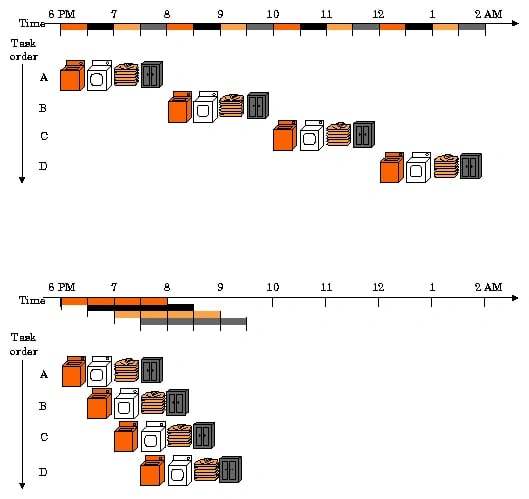위키 구독하기
Share wiki
Bookmark
Monad
Monad
**모나드(Monad)**는 고성능의 이더리움 호환 레이어1 블록체인입니다. 분산화와 확장성 간의 균형을 크게 향상시킵니다. 키오네 혼(Keone Hon, CEO), 제임스 훈사커(James Hunsaker, CTO), 그리고 유니스 지아르타(Eunice Giarta, COO)가 모나드의 공동 설립자입니다. [1]
개요
모나드(Monad)는 이식성과 성능을 제공하는 고성능의 이더리움 호환 레이어1 블록체인입니다. 이더리움 가상 머신(EVM)에 대한 완전한 바이트코드 호환성을 지원하므로 이더리움용으로 구축된 애플리케이션을 코드 변경 없이 이식할 수 있습니다. 모나드는 또한 메타마스크(MetaMask) 및 이더스캔(Etherscan)과 같은 도구와의 원활한 사용을 위해 완전한 이더리움 RPC 호환성을 제공합니다. [2][3]
성능 측면에서 모나드는 초당 1만 건의 트랜잭션(tps), 즉 하루 10억 건의 트랜잭션을 처리하며, 블록 생성 시간과 최종 확정 시간은 1초입니다. 이를 통해 더 많은 사용자와 대화형 경험을 더 낮은 트랜잭션 비용으로 지원할 수 있습니다. 이더리움 가상 머신 구현은 상하이 하드포크를 준수하므로 이전 이더리움 트랜잭션을 시뮬레이션할 때 동일한 결과를 보장합니다. [2][3]
모나드의 성능 향상은 여러 가지 혁신적인 기술에 의해 이루어집니다. 모나드BFT(추가 연구 개선 사항이 포함된 파이프라인 HotStuff 합의 알고리즘), 지연 실행(합의와 실행 간의 파이프라이닝을 통해 실행 예산 증가), 병렬 실행, 그리고 모나드Db(고성능 상태 백엔드)입니다. 병렬 실행 및 파이프라이닝 기능을 갖추고 있음에도 불구하고 모나드의 블록은 선형적이며, 각 블록 내에서 트랜잭션은 선형적으로 정렬됩니다. [2][3]
파이프라이닝
파이프라이닝은 작업을 동시에 처리할 수 있는 더 작은 단위로 분해하여 병렬 처리를 달성하는 방법입니다. 컴퓨터 프로세서에서 파이프라이닝은 단일 클럭 사이클 내에서 일련의 명령어를 병렬로 실행하여 처리량을 향상시킵니다. [4]

비동기 I/O
비동기 I/O는 데이터 통신이 진행되는 동안 CPU가 다른 작업을 진행할 수 있도록 하는 입출력 처리 방법입니다. CPU와 디스크/네트워크 작업 간의 속도 차이가 크기 때문에 비동기 I/O를 사용하면 CPU가 I/O 작업을 시작하고 I/O 결과와 관계없이 다른 명령어를 계속 실행할 수 있습니다. 작업이 완료될 때까지 기다릴 필요가 없습니다. [5]
기술
모나드BFT
모나드BFT는 부분적으로 동기화된 조건에서 비잔틴 행위자와 함께 트랜잭션 순서를 달성하도록 설계된 고성능 합의 메커니즘입니다. HotStuff에서 파생되었으며 Jolteon/DiemBFT/Fast-HotStuff 개선 사항을 통합했습니다. 낙관적 응답성을 갖춘 파이프라인 방식의 2단계 비잔틴 장애 허용(BFT) 알고리즘입니다. 정상적인 조건에서는 선형 통신 오버헤드를 가지며, 시간 초과 중에는 이차 통신을 갖습니다. 모나드BFT의 통신은 단계별로 이루어집니다. 리더는 투표자에게 서명된 메시지를 보내고, 투표자는 후속 리더에게 서명된 응답을 보냅니다. 모나드BFT는 리더 시간 초과 중에 이차 통신 복잡도를 활용하여 프로세스를 3라운드에서 2라운드로 줄입니다. [6]
잘못된 내용이 있나요?
